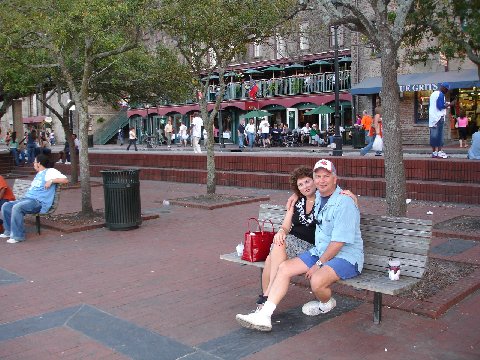St. Joseph's Day is a Roman Catholic feast day commemorating the life of St. Joseph, the foster-father of Jesus and husband of the Blessed Virgin Mary. People with very strong religious association, often those of southern Italian descent, typically celebrate St. Joseph's Day. March 19 is said to be St. Joseph's birthday.
During a famine in Sicily, when food was scarce and many people were starving, the poor people had only their faith to rely on. St. Joseph was known as the protector of the Holy Family and Italians had strong family relationships, so they prayed for St. Joseph to intercede for them so they could have successful crops. Their prayers were answered, and the famine came to an end. In gratitude, people promised to make annual offerings of their most precious possession – food – in St. Joseph's honor.
Today, the faithful erect "St. Joseph Tables," which are set to honor St. Joseph. They are filled with beautiful and often elaborate foods, including meatless dishes such as stuffed artichokes, pasta and fish, as well as breads, cookies, pastries, cakes and other delicacies. Each table is blessed by a priest and presided over by a statue of St. Joseph. A stalk of lily blossoms, votive candles and a lace tablecloth are other typical items used to decorate the feast table.
When you visit a St. Joseph's table, you often receive gifts of fava beans and breads. Fava beans play an integral part of the celebration because this was the food that saved the Sicilians from starvation. The bean is said to bring good luck, and it is believed that if the St. Joseph's bread is kept in the home,
 This is me only 3 weeks old at my first St. Joseph's Day
This is me only 3 weeks old at my first St. Joseph's Day
March 19,1969

In Sicily, where St. Joseph is regarded by many as their Patron Saint, and many Italian-American communities, thanks are given to St. Joseph ("San Giuseppe" in Italian) for preventing a famine in Sicily during the Middle Ages. According to legend, there was a severe drought at the time, and the people prayed for their patron saint to bring them rain. They promised that if he answered their prayers, they would prepare a large feast to honor him. The rain did come, and the people of Sicily prepared a large banquet for their patron saint. The fava bean was the crop which saved the population from starvation, and is a traditional part of St. Joseph's Day altars and traditions. Giving food to the needy is a St. Joseph's Day custom. In some communities it is traditional to wear red clothing and eat a Sicilian pastry known as a Zeppole on St. Joseph's Day.
Upon a typical St. Joseph's Day altar, people place flowers, limes, candles, wine, fava beans, specially prepared cakes, breads, and cookies (as well as other meatless dishes), and zeppole. Foods are traditionally served containing bread crumbs to represent saw dust since St. Joseph was a carpenter. Because the feast occurs during Lent, traditionally no meat was allowed on the celebration table. The altar usually has three tiers, to represent the trinity.
Some villages like Belmonte Mezzagno use to burn wood and logs in squares on the day before St.Joseph, as thanksgiving to the Saint. This is called "'A Vampa di San Giuseppe"(the Saint Joseph's bonfire). How to Celebrate St. Joseph's Day
How to Celebrate St. Joseph's Day
Instructions
Things You'll Need:
Fava beans
Zeppole pastry
Red clothing
Altar
Step 1
Abstain from eating meat. Although avoiding meat isn't forbidden by the church, many Catholic families still observe this tradition. Fava beans, pasta, fish and stuffed artichokes replace meat at dinner tables on St. Joseph's Day. Many families consider giving food to the homeless and needy on this holiday.
Step 2
Wear red. Italians and Sicilians break out the red clothing on St. Joseph's Day, just like the Irish do on St. Patrick's Day.
Step 3
Erect an altar to St. Joseph. A tradition started in Italy and Sicily, many families offer flowers, cakes, cookies and limes to St. Joseph. Catholics place a pastry called Zeppole on altars in some Italian and Italian-American communities. Formal St. Joseph altars, such as those placed in churches, contain three tiers to signify the Trinity.
Step 4
Attend a St. Joseph's Day parade. In the United States, the Italian residents of New Orleans conduct St. Joseph's parades and build altars to the Saint, publicly and privately. Chicago, Boston and New York City also sponsor official St. Joseph's Day parades and celebrations.
Step 5
Go to church. Celebrate St. Joseph's Day by attending mass and saying the Novena to St. Joseph. Known as the Patron Saint of workers, parishioners may also honor St. Joseph's memory on May 1st, or May Day.


When the altar is bessed by the Priest,
'O, glorious St. Joseph, we stand before this Altar with joyful and grateful hearts. We lovingly present to you the labor of our hands and the dedication of our hearts that have fashioned this Altar in your honor. We again place ourselves under your powerful protection. Help us follow your example of complete trust and faith in Divine Providence. Open our minds and hearts to love and serve the poor, the suffering and those rejected or ignored by society. As a family, teach us to love and honor each member of our families with the love and reverence you had for Jesus and Mary. As a nation, inspire in us the will and the way to live in peace with all nations of the world that in our day we can experience the fulfillment of the prayer of Jesus. Peace be to you.
Remember, O most pure spouse of the Blessed Virgin Mary, our sweet protector, St. Joseph, that no one ever had recourse to your protection or implored your aid without obtaining relief.
Lord Jesus, bless this Altar, all this food, the candles, those who prepared it and all those who visit it. We ask this in the name of the Father, and of the Son and of the Holy Spirit.
Amen.'
At this time, I invite you to join with me in remembering our loved ones who are no longer with us and whom we miss very much. Through them we experienced this and other traditions, which we hope future generations will perpetuate.
Now, the ritual, in Sicilian:
St. Joseph holds up two fingers of Jesus' right handSt. Joseph says and Jesus repeats (3 times):
Benedette la CenaBenedette MaddalenaBenedette tutte quando.Patri, Figli, e Spiritu SantuQuando, Quando, Che Angele Sante.Patri, Figli, Spiritu Santu
(Bless this meal, Bless Maddalena, Bless everyone, Father, Son and Holy Spirit When, when, what Sainted Angels. Father, Son and Holy Spirit)








No comments:
Post a Comment